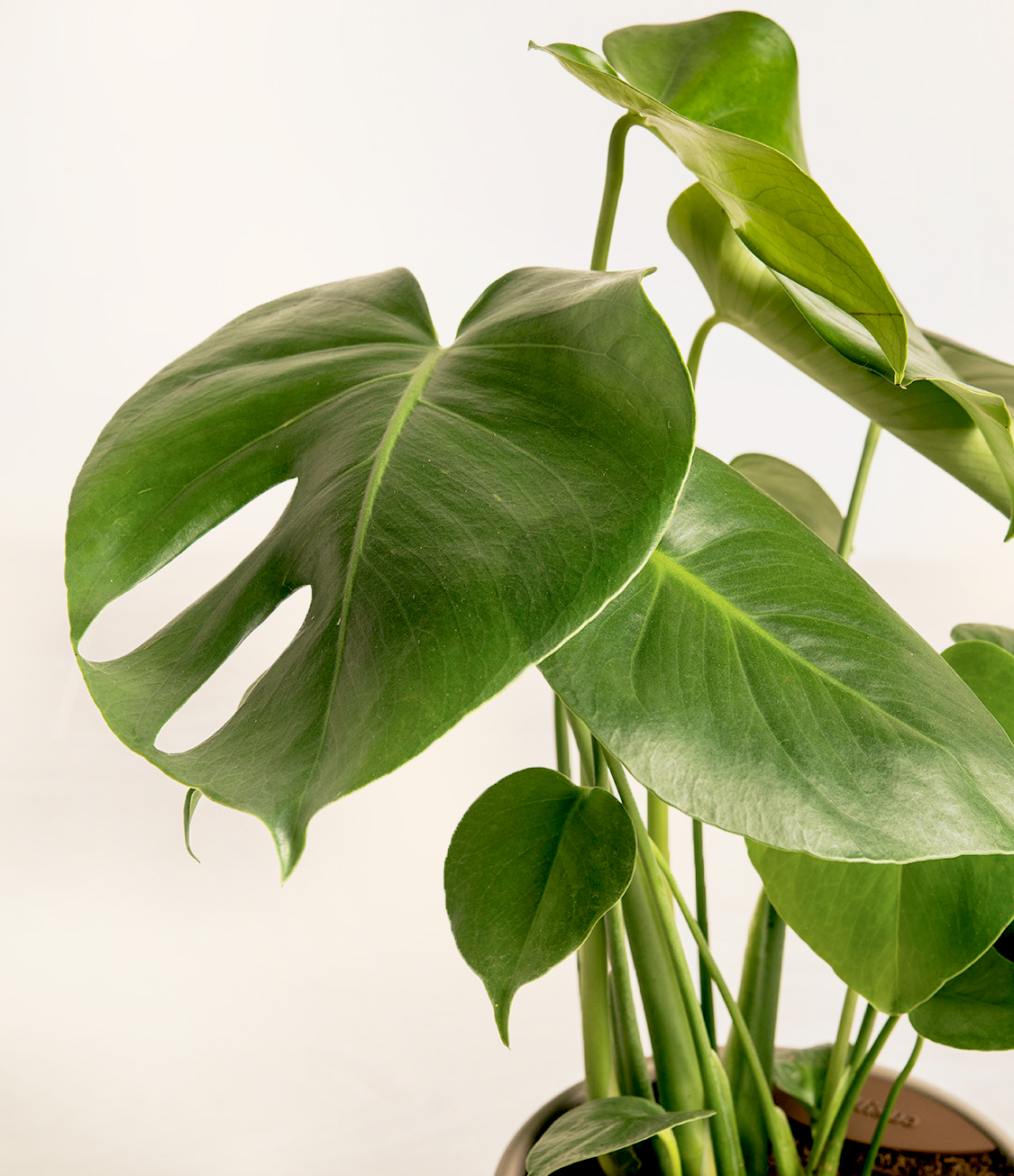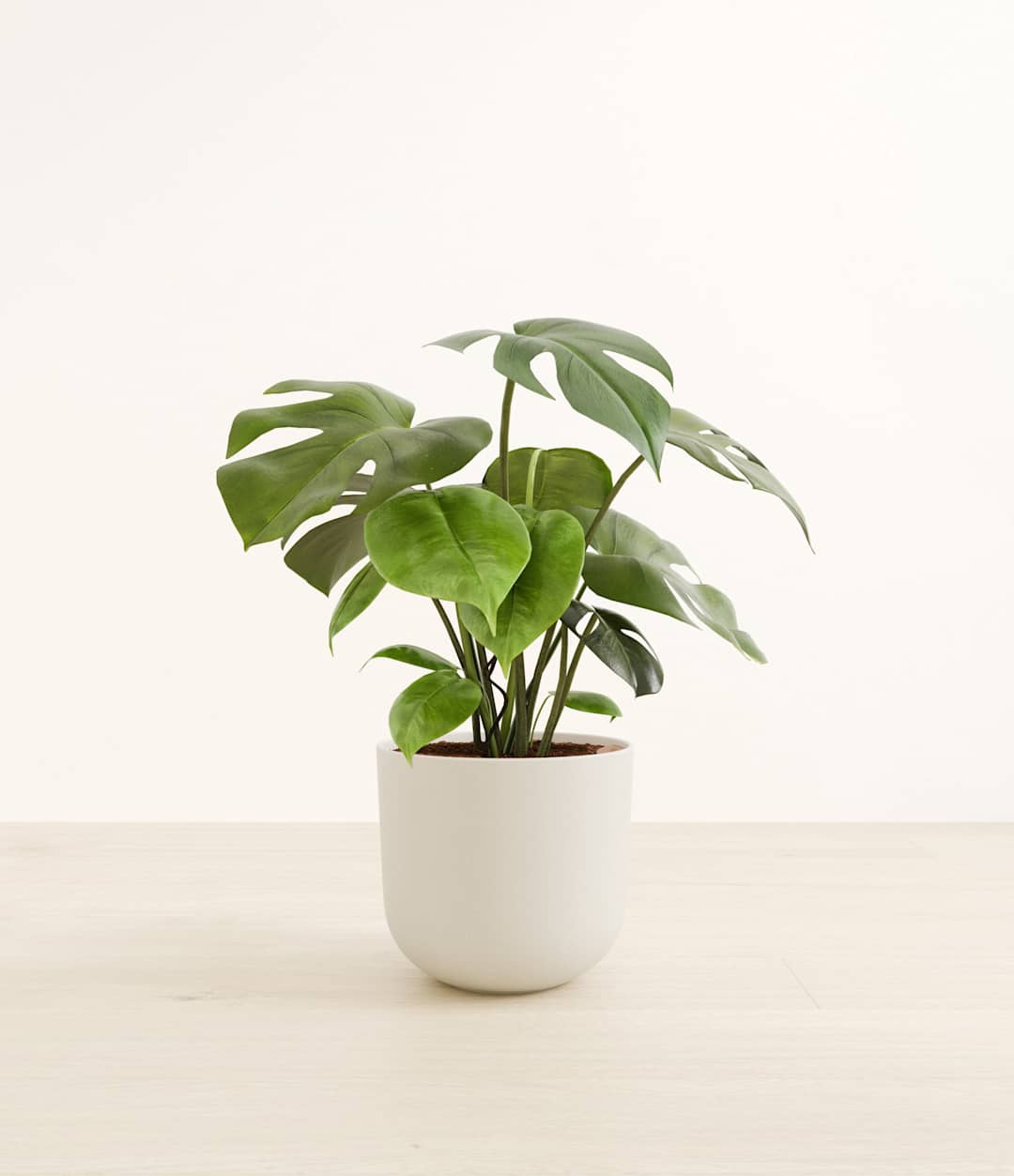How to care for Monstera Deliciosa
Shop this plantAbout Monstera Deliciosa
Other common names
- Swiss cheese plant
- Windowleaf
- Ceriman
How Often Should I Water My Monstera Deliciosa?
Monstera Deliciosa Light Needs
Monstera Deliciosa Plant Care
How Big Do Monstera Deliciosa Plants Grow?
Temperature & Humidity
Monstera Deliciosa, also known as the Swiss Cheese plant, is a true lover of tropical conditions, making it an ideal indoor companion for those looking to bring a piece of the tropics home. It thrives in temperatures that range from 65 to 80 degrees Fahrenheit (or 18 to 27 degrees Celsius). While the Monstera can tolerate a slight drop in temperature, it's best to keep it from experiencing conditions below 60 degrees Fahrenheit.
Humidity is a significant aspect of the Monstera Deliciosa's environment. It enjoys a humidity level of around 60%, which replicates the moist and humid conditions of its tropical origins. To help maintain these levels, especially during the dry winter months, consider placing a humidifier in the room or using a pebble tray filled with water.
Remember, the Monstera Deliciosa is a plant that likes a balanced environment. It doesn't appreciate being too hot or too cold and enjoys a humid, but not drenched, atmosphere. By maintaining these optimal conditions, your Monstera will reward you with its unique and impressive leaf patterns.
With easyplant, managing the optimal temperature and humidity for your Monstera Deliciosa is a breeze. Set your desired conditions and let easyplant take over the rest. This way, you can enjoy the lush greenery and unique beauty of a tropical rainforest right from the comfort of your home, hassle-free.
Are Monstera Deliciosa Toxic for Pets & Kids?
Troubleshooting Common Problems with Monstera Deliciosa
Navigating the care journey of your Monstera Deliciosa involves keen observation of how your plant is reacting to its environment. Every plant gives unique signals when it isn't quite comfortable.
If you notice your Monstera Deliciosa's leaves are turning yellow, and later brown and crispy, relocate the pot to a more brightly lit area. If you notice leaves are becoming droopy, relocate the pot to a less brightly lit area.
If the iconic split leaves of your Monstera Deliciosa begin to appear solid and whole, it could indicate that your plant isn't getting enough indirect light. Consider moving the pot to an area with better light exposure, ensuring it's indirect to prevent leaf burn.
Wilting or yellowing leaves can be a sign of overwatering. If you're using an easyplant self-watering pot, it's crucial not to refill the reservoir unless a month has passed since the last watering or if the tank is not yet empty. If you don't have an easyplant pot, remember to regularly check the soil, watering only when the top 1-2 inches are dry.
Pests, including mealybugs and aphids, can pose a threat to your Monstera Deliciosa. If you find sticky residue on the leaves or nearby surfaces, or the plant has spots or discolored areas, these might be signs of a pest issue. Using a pre-mixed neem oil spray or a solution of mild soapy water can help manage this problem. Remember, routinely wiping down leaves can help to keep them clean and discourage further infestations.
If the air around your Monstera Deliciosa is too dry, the leaves may start to curl or brown. Increasing humidity is vital, but avoid misting as this can contribute to leaf spot disease. Instead, you might want to group it with other plants or use a humidifier.
By diligently addressing these needs, your Monstera Deliciosa will flourish, gracing your space with its dramatic, jungle-like foliage.
Frequently Asked Questions about Monstera Deliciosa Plant
- Is a Monstera a good indoor plant?An ideal indoor plant, your Monstera should enjoy a warm and humid environment and shouldn’t require many hours of direct sunlight. Monstera’s distinctive aesthetic is a matter of taste, but this plant has all the hallmarks of an excellent indoor specimen. It doesn’t react to low-light conditions by growing to be lanky, and it can be kept small or grown large to better suit its environment.
- What is the difference between Monstera deliciosa and Monstera adansonii plants?Both variants of Monstera are known by similar names, but there are some key differences when comparing Monstera Deliciosa vs Monstera Adansonii. First and foremost, deliciosa tends to sprawl outward as it attempts to vine, while the adansonii prefers to trail. That makes the former ideal for decorative climbing of walls and poles, and the latter well-suited to hanging baskets. Adansonii’s leaves are almost half the size. It has smaller and more numerous decorative holes that are closed in around their perimeter. By contrast, deliciosa has larger and fewer leaf holes.
- Is a Monstera deliciosa easy to take care of?In the right environment, it can be very easy to take care of Monstera. It prefers bright light, but not direct light, and it thrives at room temperature. (Between 65-75F.) However, in warmer environments, it will require additional watering, while cooler environments may discourage growth. Additionally, Monstera enters a hibernation period at the end of the season, at which point it will require less water than usual. Overall, this particular species is easy to manage, and only slightly more challenging in an arid climate.

